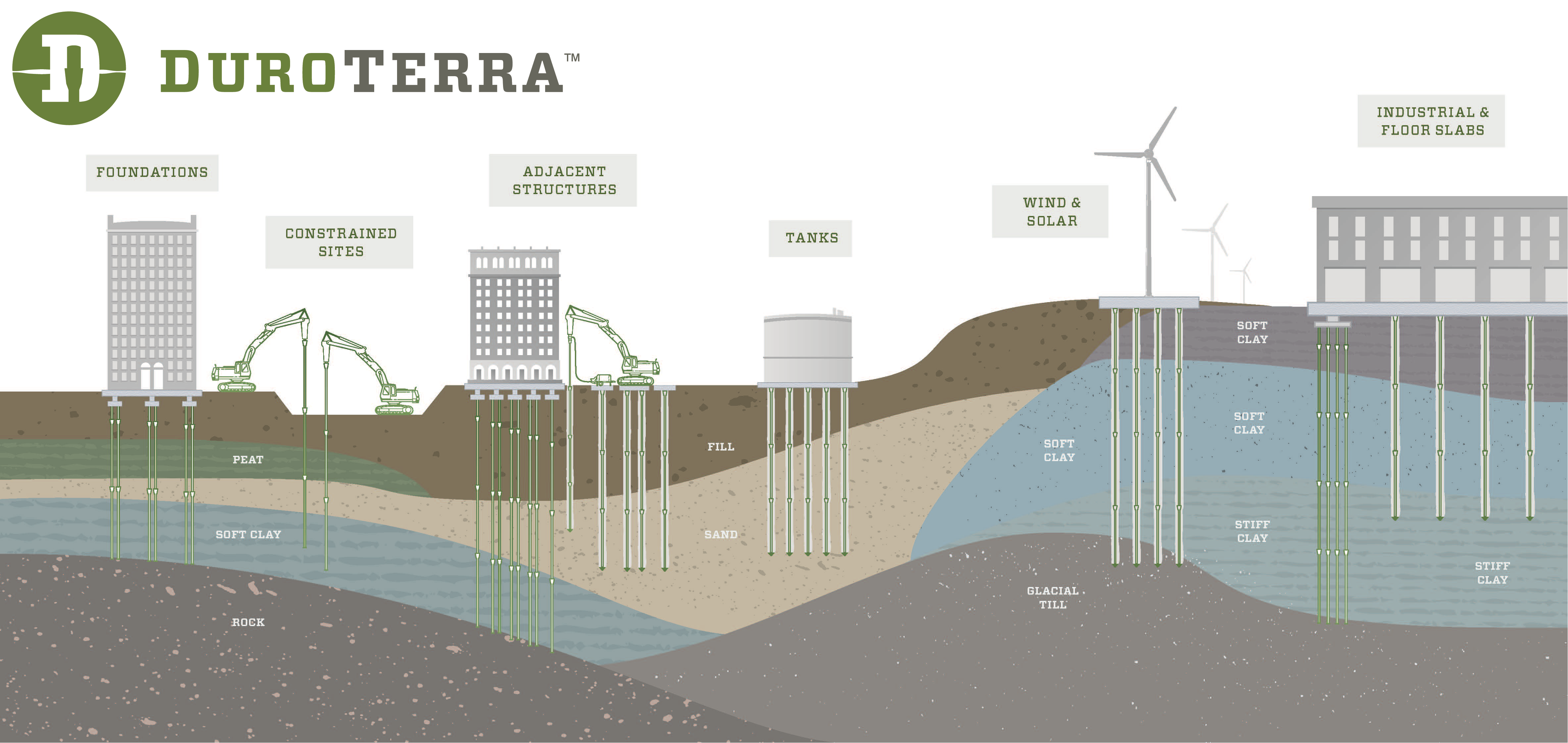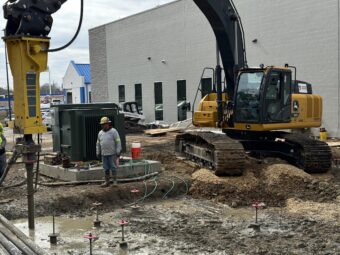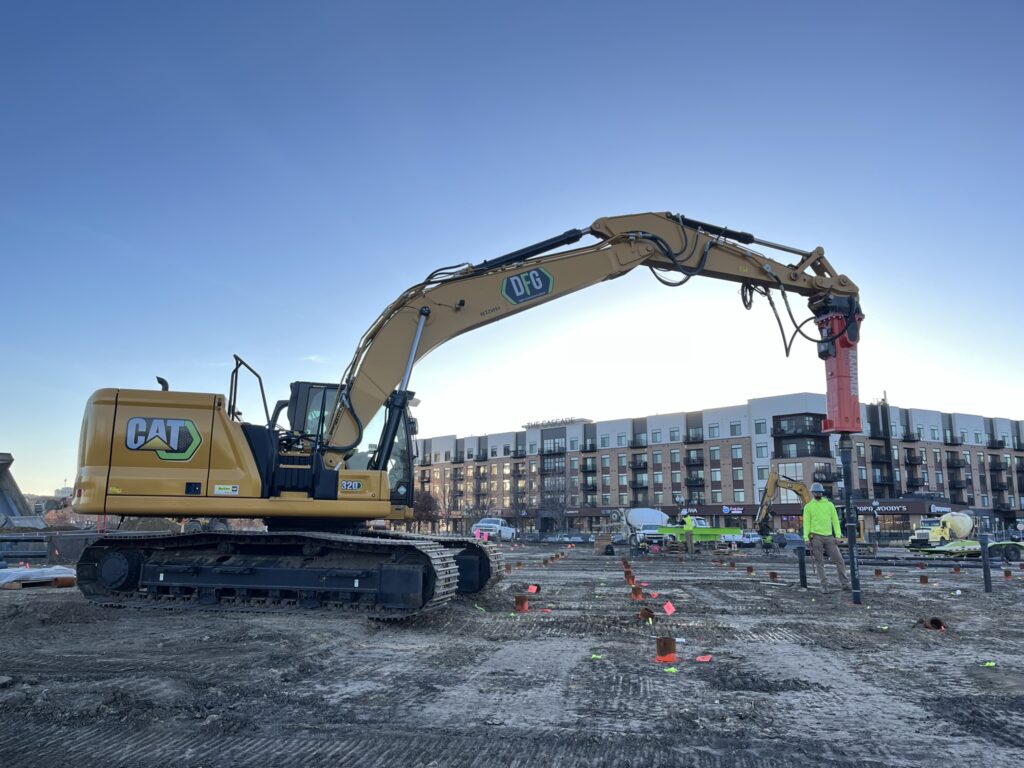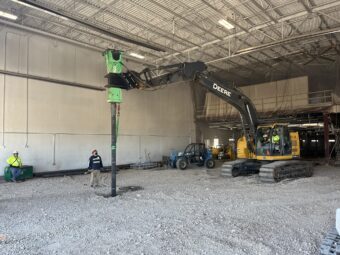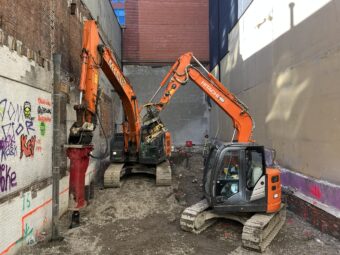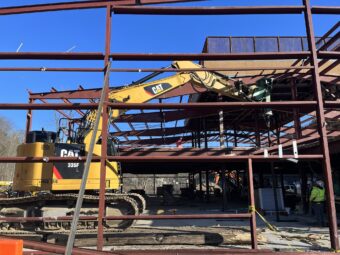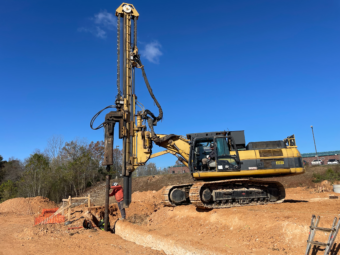Not only FAST. SIMPLE. SAFE.™….Ductile Iron Piles are: Experienced. Proven. Reliable.
For almost a decade, geotechnical contractors, designers, and consultants across North America have been working with DuroTerra to deliver TRM’s Ductile Iron Pile (DIP) system as a high-value alternative to helical piles, micropiles, and most deep foundation applications subject to constrained access. DIPs have been used for hundreds of projects with variable bedrock, difficult site access, vibration concerns, interior renovations, and limited overhead clearances. While still somewhat new to some parts of the United States and Canada, DIPs have become a reliable and common foundation solution in many parts of North America.
But the track record doesn’t start in North America. Did you know that Ductile Iron Pile deep foundations have been used for more than 40 years in Europe? Geotechnical contractors in Europe rely on their considerable experience from successful projects of all types and sizes, providing geotechnical consultants and designers with a wealth of load testing data for Ductile Iron Piles installed in almost any soil condition. Additionally, European building codes are notoriously more stringent than comparable U.S. codes, meaning that Ductile Iron Pile design methods and practices have been vetted and verified through the toughest of review processes.
Considering the worldwide track record of success, designers and specifiers can rely on the Ductile Iron Pile system to provide a proven and reliable foundation solution, based on more than 40 years of experience.
Routine readers of our dialogue know that we always feature case histories of projects in the U.S. and Canada to highlight the various applications and challenges solved with the system. This month, we’ll shift our focus overseas to see how our European counterparts bring value to their customers using Ductile Iron Pile systems.
PROJECT EXPERIENCE – Würth Logistic Center Expansion Neumarkt, South Tyrol, Italy
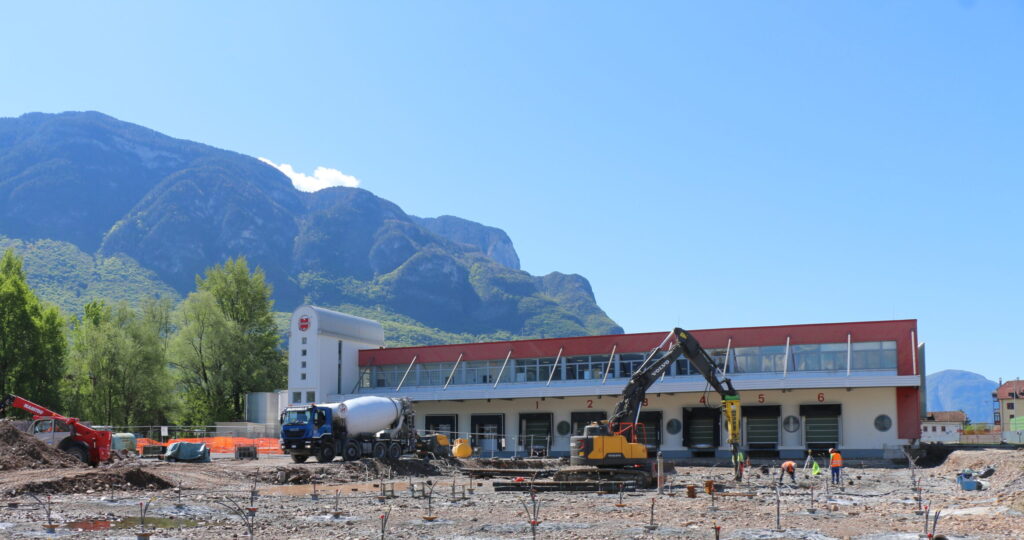
The soil investigation for a new 4,000 square meter (13,120 SF) addition encountered deep deposits of soft soil, insufficient to provide traditional shallow foundation support for the new logistics center and high-bay warehouse. The new facility was subject to heavy structural loads and deep foundation work had to be performed at a pace of 600 meters/day (1,900 linear foot/day) to maintain project schedules.
Based on past experience with the system, Keller Fondazioni was chosen for the work. Prior to the beginning of construction, load testing was performed to verify that the DIP deep foundation design would satisfy the loading demand and meet settlement requirements of the structure.
Keller installed a total of 410, Series 170/9.0 (6.69” outer diameter and 0.35” wall thickness) and 170/13.0 (6.69” OD and 0.51” wall thickness) Ductile Iron Piles using a 270 mm (10.6”) conical grouting shoe to build exterior grouted DIPs to depths up to 45 m (147 feet). According to Keller site manager Christian Weetzlmaier, “With the pile system from TRM, the foundation of the new logistics centre could be successfully implemented in a settlement-sensitive soil with different geotechnical properties, taking into account high settlement requirements.” In addition to providing building support, the system was also installed with geothermal heat exchangers for enhanced sustainability. The work was all completed in two months, averaging more than 1,000 LF/day.
PROJECT EXPERIENCE – NB Biohort W3D Linz, Austria
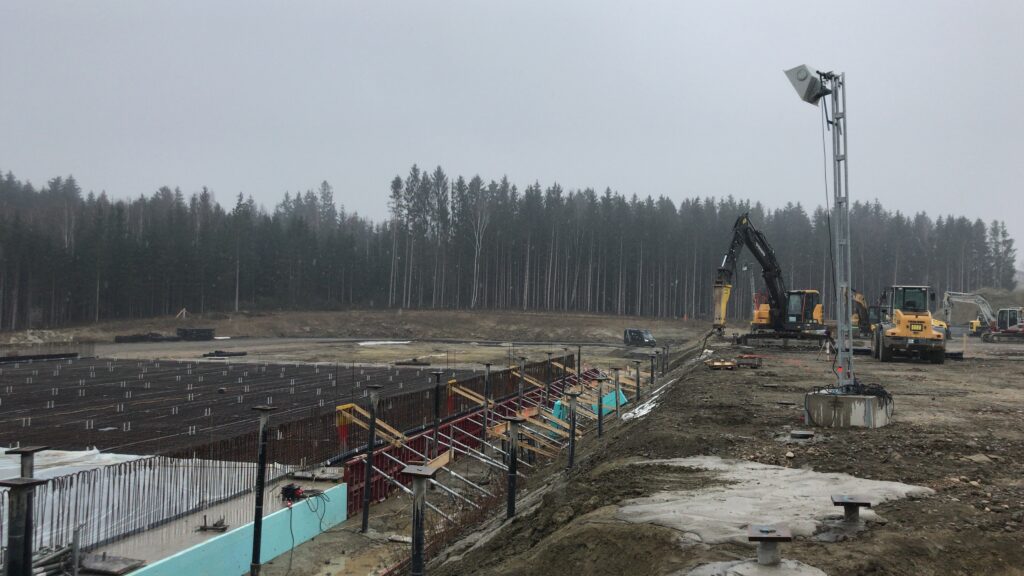
A new building addition was planned to the NB Biohrt facility in Linz, Austria, consisting of expanded production space, storage halls, and a new high-bay warehouse. Subsurface conditions consisted of clay and loam of up to 3.5 m (11.5 ft). A stratum of weathered granite, locally called “flins” was encountered between the clay and the underlying, more competent bedrock, which consisted of gneiss or granite. The bedrock elevation varied throughout the building area, leading designers to seek a deep foundation solution that could easily accommodate the changes in pile termination depths.
Ductile Iron Piles were chosen for use on this project to reduce risk of changes in rock elevations, maximize material efficiency and eliminate waste. The Plug-and-Drive connection provides the ability to easily and rapidly drive to virtually any depth while also using pile cut-offs as starter segments for subsequent piles. More than 11,000 linear meters (36,080 linear feet) were installed for the new structure, resulting in very little pile waste. Due to the adaptability of the pile lengths, DIPs proved to be an ideal solution, both economically and technically.

